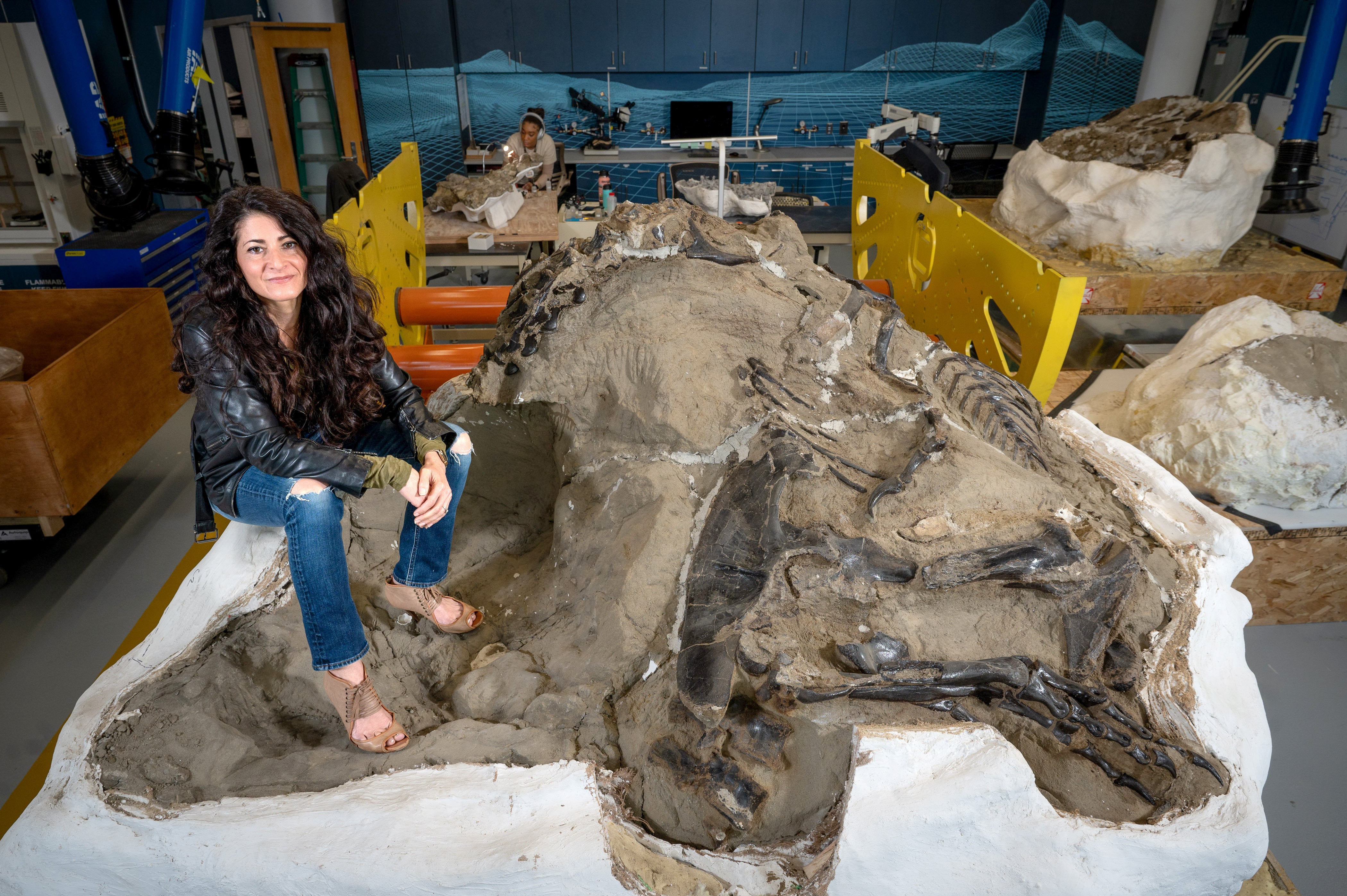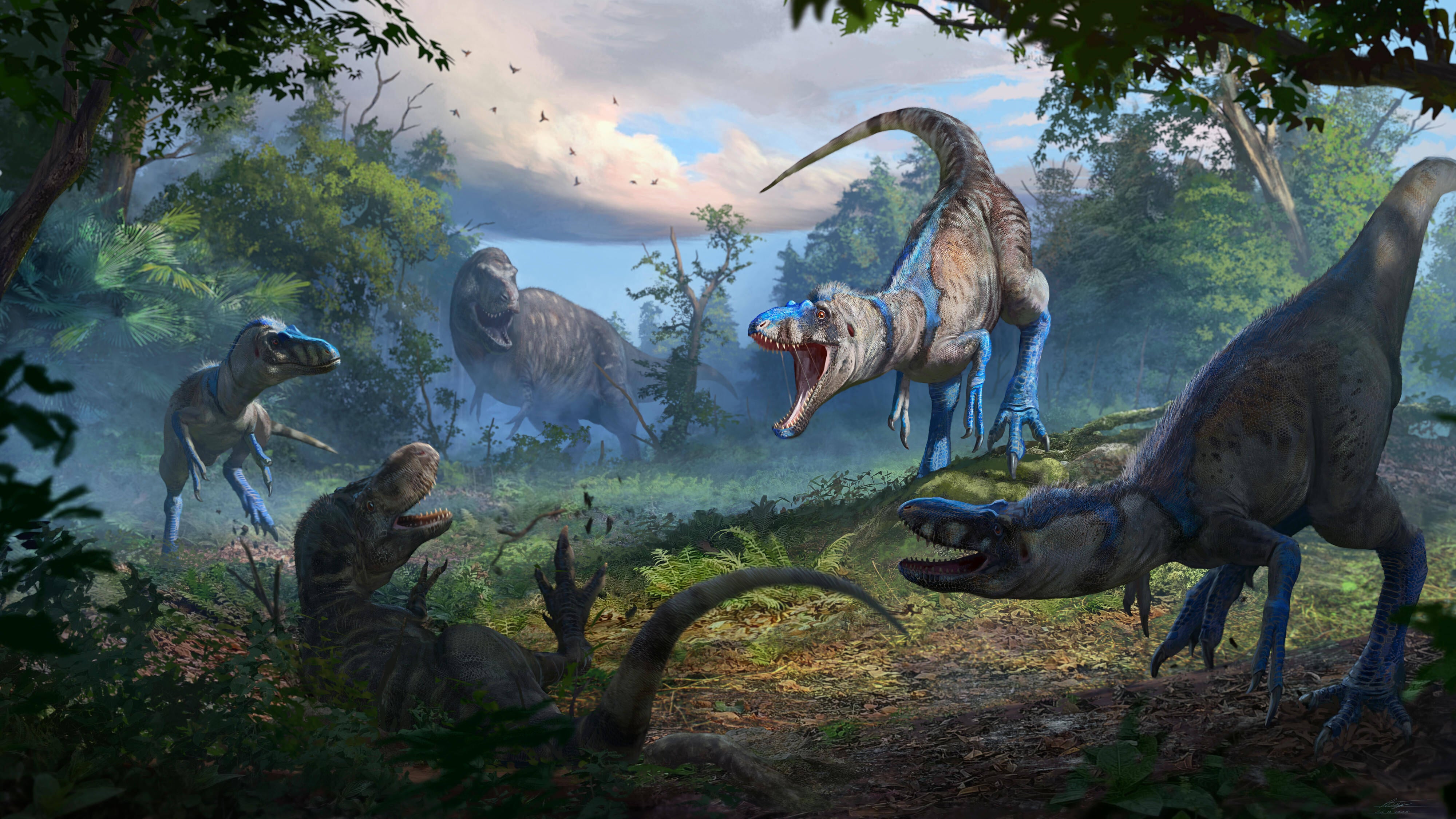New evidence has been discovered to resolve a case of a mysterious dinosaur excavated in the 1940s that has long puzzled scientists.
The mysterious small skull excavated in the 1940s was thought to be a Tyrannosaurus rex. But having only the skull made it hard to tell if it belonged to a child or an adult.
Another skull and skeleton, nicknamed Jane, was added to the debate but wasn’t able to settle the controversy.
A research team said it has discovered new evidence that resolves the case. The latest clue comes from a complete skeleton — first uncovered in 2006 in Montana — that scientists say identifies the mystery reptile as its own species and not a juvenile Tyrannosaurus rex.
Signs pointed to a dinosaur that's a distant T. rex cousin known as Nanotyrannus lancensis, the researchers reported in a study published Thursday in the journal Nature.
The discovery “rewrites decades of research on Earth's most famous predator,” said study co-author Lindsay Zanno with the North Carolina Museum of Natural Sciences and North Carolina State University.

Growth rings within the bones found in Montana’s Hell Creek Formation told scientists the new dinosaur was an adult about half the size of a fully-fledged T. rex. From growth comparisons to other reptiles like crocodiles, they also found that the major differences between the creature's skull and an adult T. rex's — changes in bone structure, nerve patterns and sinuses — were unlikely to form simply going through puberty.
There's now “more support and evidence than there ever has been” that this T. rex relative could exist, said Holly Woodward, a fossil bone expert from Oklahoma State University who had no role in the new study. But she's not yet convinced that the other mystery skeletons, like Jane, are something new.

Other independent scientists also said the debate isn't over. The new skeleton is indeed an adult, but it could be a sister species to T. rex and not a distant relative, said vertebrate paleontologist Thomas Carr of Carthage College.
There are similarities between the shape of T. rex's skull and the mystery specimens that keep him from switching camps.
“I don't think this study settles everything,” he said.
Resolving this case of mistaken identity is important to understanding how T. rex grew up, said study co-author James Napoli with Stony Brook University. Another big question is whether T. rex was the main predator prowling toward the end of the age of dinosaurs 67 million years ago — or whether a tinier, but still mighty predator also roamed.
The new skeleton is dubbed “Dueling Dinosaurs” because it was found intertwined with the bones of a Triceratops, and is currently on display at the North Carolina Museum of Natural Sciences.
Trump's comments on nuclear testing upend decades of US policy. Here's what to know about it
Scientists identify why we can’t concentrate after a bad night’s sleep
The delicious treat that can reduce risk of dementia when eaten once a week
Alaska typhoon disperses thousands of ancient artifacts from early Yup’ik community
Angler digging for worms uncovers medieval cauldron filled with coins
New study of fossilized bones rewrites history of early human ancestors







